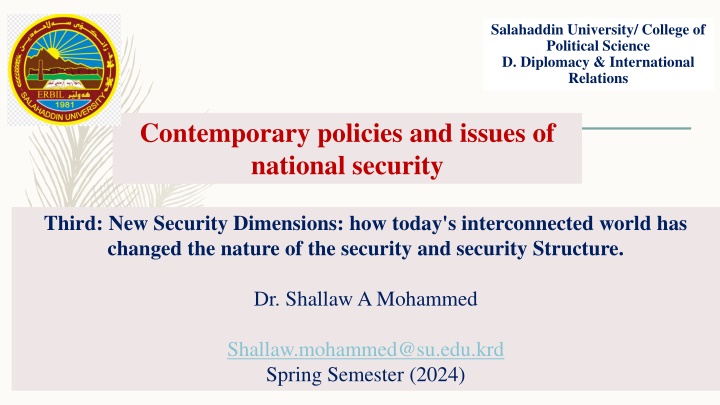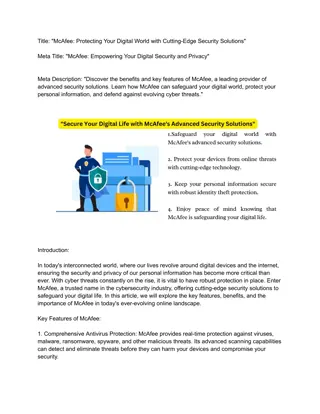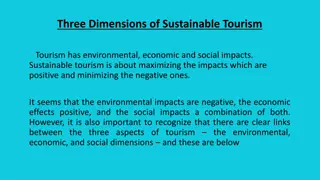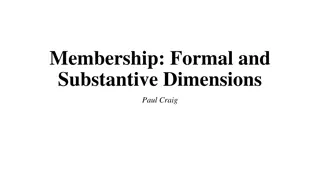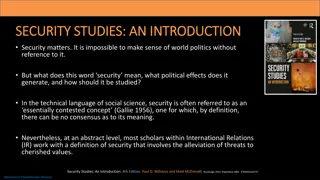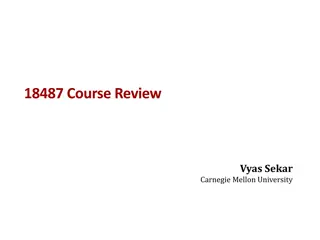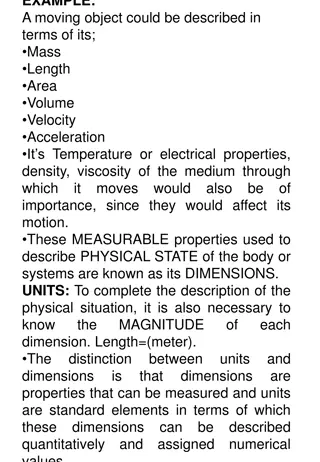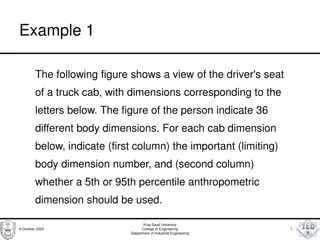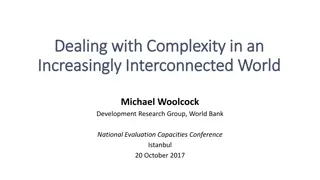New Security Dimensions in Today's Interconnected World
This content explores new dimensions of security in the modern interconnected world, focusing on substantive, reference, and geographical dimensions. It examines how security threats have evolved beyond traditional military concerns to include economic, ecological, and humanitarian issues. The shifting focus from state security to social and individual security is also analyzed, reflecting the changing nature of security in contemporary times.
Download Presentation

Please find below an Image/Link to download the presentation.
The content on the website is provided AS IS for your information and personal use only. It may not be sold, licensed, or shared on other websites without obtaining consent from the author.If you encounter any issues during the download, it is possible that the publisher has removed the file from their server.
You are allowed to download the files provided on this website for personal or commercial use, subject to the condition that they are used lawfully. All files are the property of their respective owners.
The content on the website is provided AS IS for your information and personal use only. It may not be sold, licensed, or shared on other websites without obtaining consent from the author.
E N D
Presentation Transcript
Salahaddin University/ College of Political Science D. Diplomacy & International Relations Contemporary policies and issues of national security Third: New Security Dimensions: how today's interconnected world has changed the nature of the security and security Structure. Dr. Shallaw A Mohammed Shallaw.mohammed@su.edu.krd Spring Semester (2024)
-New Security Dimensions in the interconnected world . The Outline: 1-The Substantive Dimension - 2-The Reference Dimension - 3-The Geographical Dimension - 4-The Danger Dimension - Source: Human Security Division, Federal Department of Foreign Affairs, Switzerland /
New Security Dimensions in the interconnected world. 1-The Substantive Dimension The substantive dimension of security relates to the question: in which specific domains are security threats actually being observed? It concerns the type of security that security policy has to guarantee. Whereas military threats dominated the security discourse in the 1950s and 1960s, economic, ecological and humanitarian issues have come to the forefront in the succeeding decades Dimensions of security. (Source: DAASE 2013: 13) Example: In addition to the realistic view, in which military threats to the state s security are central and which is characteristic of the period after the Second World War and the Cold War since the oil crises in the 1970s there has been a growing awareness of a new threat: in an economically integrated world, economic security is at least as important as military security. The interest in the economic security of states received a substantial boost with the oil crises in the 1970s and the pursuit of strategic trade policy by emerging powers from the 1980s
New Security Dimensions in the interconnected world 2-The Reference Dimension The reference dimension of the concept of security turns on the question of whose security must be guaranteed: the nation state s, the society s or the individual s. Here too we see an extension of the concept of security beyond the state as the referent object of security policy. Concerns about security shifted From State Security to Social and Individual Security Dimensions of security. (Source: DAASE 2013: 13) The security interests of other referent objects (specific groups or individuals) are deemed to coincide with nation state security. The concept of security then centers not only on physical and inter-state violence, but touches on other types of threats to communities and individuals. Example: After the Cold War, specifically in Western democracies, concerns about security shifted from the state to society and the individual
New Security Dimensions in the interconnected world 3-The Geographical Dimension The geographical dimension of the concept of security determines the levels of geographic scale to which security policy applies. Is it the territory of a state, based on the idea that domestic and foreign policy are strictly separate and that the limits of the state coincide (or should coincide) with the borders of the society? This defensive containermodel of security has been inadequate for a long time. Security in a Regional, International and Global Context Dimensions of security. (Source: DAASE 2013: 13) The expansion of the geographical dimension has drawn more attention to regional, international and global security complexes, in which states are so interconnected that their national security cannot be considered separately from the security of other states. Unrestrained internal conflicts like those in Ukraine and Syria had an enormous international impact, in one case in the form of political and military interventions by a neighboring country, in the other through the exodus of large numbers of refugees to other countries in the Near East and Europe.
New Security Dimensions in the interconnected world 4-The Danger Dimension The most recent expansion of the concept of security interpretations of what constitutes danger. It depends on how specifically or diffusely danger is defined. It makes a great deal of difference whether security is viewed as the absence of a military threat to a clearly-defined territory or as the reduction vulnerability in a globalized world. Or as the reduction of risks and insecurity even before there is any question of an acute threat. relates to of economic Dimensions of security. (Source: DAASE 2013: 13) Example: Neither the shooting down of Flight mh17 nor the capture of areas in the Near East by Da esh nor the attacks in Paris, Brussels and Berlin correspond with the traditional image of military conflicts between states seeking to control parts of each other s jurisdiction, in other words territory.
Thanks Thanks
Bibliography 1. Hirsch Ballin, Ernst, Huub Dijstelbloem, and Peter de Goede. Security in an interconnected world: A strategic vision for defence policy. Springer Nature, 2020. Chapter2. 2. Jones, Peter. "Structuring Middle East Security." Survival 51, no. 6 (2009): 105-122. 3. M ller, B. (2000). The concept of security: The pros and cons of expansion and contraction. Copenhagen Peace Research Institute. 4. Mosala, Abram, The Impact of Globalisation on Security, Munich, GRIN Verlag, 2001. https://www.grin.com/document/376713
